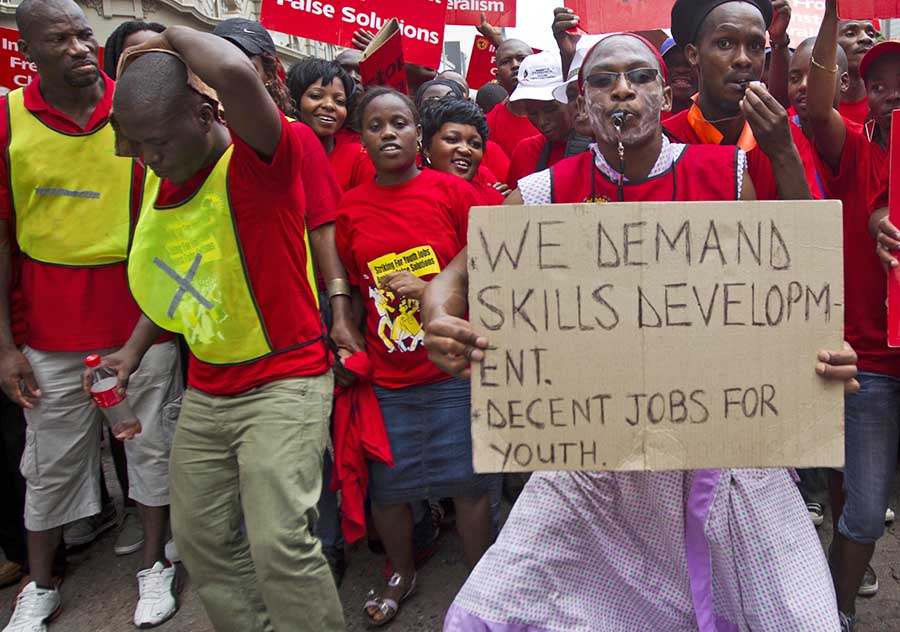Tue 21 January 2020:
(AFP) More than 470 million people worldwide are currently unemployed or underemployed, the UN said on Monday, warning that a lack of access to decent jobs was contributing to social unrest.
The global unemployment rate has remained relatively stable over much of the past decade, according to the UN’s International Labour Organization.
But while the rate — which stood at 5.4 percent last year — is not expected to change much, overall jobless numbers are likely to inch up as slowing economies reduce the number of jobs available to a growing population.
This year, the number of people registered as unemployed is expected to rise to 190.5 million up from 188 million in 2019, ILO said in its annual World Employment and Social Outlook report.
At the same time, the UN body stressed that some 285 million people worldwide are considered underemployed, meaning they either work less than they want to, have given up searching for work or otherwise lack access to the labour market.
That amounts to nearly half a billion people and represents a full 13 percent of the global labour force, the ILO pointed out.
– ‘Extremely worrying’ –
“For millions of working people, it is becoming increasingly difficult I think to build better lives through work,” ILO chief Guy Ryder told reporters in Geneva.
He warned that “persisting and substantial work-related inequalities and exclusion” were preventing many from finding decent work and thereby also creating better futures.
“I think that this is an extremely worrying finding,” he said, adding that lacking access to decent work appeared to be part of what was spurring growing protest movements and unrest around the world.
“Labour market conditions are contributing to… this erosion of social cohesion in many of our societies,” he said, referring to mass demonstrations in places like Lebanon and Chile.
According to the ILO’s “social unrest index”, measuring the frequency of things like demonstrations and strikes, there was an increase both at the global level and in seven out of 11 subregions between 2009 and 2019.
The ILO report highlighted that more than 60 percent of the global workforce currently work in the informal economy, often toiling for substandard wages and lacking basic social protections.
And in 2019, more than 630 million people — a fifth of the global working population — lived in so-called working poverty, meaning they made less than $3.20 per day in purchasing power.
At the same time, the ILO report warned of significant income and job access inequality, driven by things like gender, age and geographic location.
In particular, it warned that a staggering 267 million young people between the ages of 15 and 24 are not in employment, education or training, while many more in this group endure substandard working conditions.
The study showed that the average share of national income going to pay wages and other labour costs shrank from 54 percent to 51 percent between 2004 and 2017.
And within the waged population, the gap between the highest earners and those at the bottom is “extremely unequal”, Ryder said.
The ILO report found that it took 11 years for the bottom 20 percent of wage earners to make the same amount as the top 20 percent make in a year.
“The situation is worse than we previously thought,” Ryder said.
Think your friends would be interested? Share this story!





